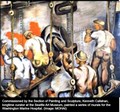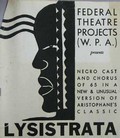VIDEO INTRODUCTION
 Four-minute film introduces themes and resources of the Great Depression in Washington State Project
Four-minute film introduces themes and resources of the Great Depression in Washington State Project
The Great Depression first shattered and then rebuilt the economy of Washington State, leaving it with roads, bridges, dams, and a new electric grid that set the stage for rapid industrial growth. It rearranged the state's politics, ending decades of Republican rule, setting up a powerful labor movement, a new Democratic Party, and a new set of political priorities. It ended prohibition and launched new cultural institutions. It saw the creation of parks and trails and the realization of a long struggle to create the Olympic National Park. By the end of the 1930s, Washington was a different place, its future beginning to come clear even before World War II turned the state into an aerospace center and industrial powerhouse.
The Great Depression in Washington State Project is a multimedia website that explores this important decade. Here you will find detailed accounts of issues, incidents, institutions, and people, along with hundreds of photographs, documents, and news articles from the period. This site is part of the Civil Rights and Labor History Consortium based at the University of Washington.
Tour the project

A Concise History of the Decade
Start with a short historical narrative of the Great Depression in Washington State in ten brief illustrated chapters.

Economics and Poverty
The crash of 1929 led to business failures, Hoovervilles, and the organizations of the unemployed. Recovery began in 1933.

Strikes and Unions
Washington was a flashpoint for labor organizing, from Seattle's docks to fruit orchards and the lumber mills and logging camps.

Radicalism
As leftists became influential in Washington's politics they contended with anti-Communist and sometimes fascist groupings.

Civil Rights
The social unrest of the 1930s led to new opportunities--and challenges--for communities of color. Read about the decade's civil rights struggles and victories involving African Americans, Japanese Americans, Filipino Americans and Jewish Americans.

Politics
Washington State underwent a sea change as the Democratic Party became dominant and radicals and New Deal reformers pushed politics to the left.

Culture and the Arts
The Depression and New Deal arts funding produced radically new ways of seeing, representing, and understanding

University of Washington
From faculty unions and student politics to new campus parks, the Depression changed the state's premiere university.

Everyday Life
This section explores the ways people lived and understood their lives were transformed by the crisis with reports from Bellingham, Tacoma, Seattle, Raymond, Kitsap and other communities.

Public Works
New Deal public works programs literally rebuilt Washington State, from the Grand Coulee Dam to Seattle's neighborhood libraries.
Visual Arts
The New Deal reshaped the role of artists and brought art to new publics. This section details the history of the New Deal programs that produced public art. View artworks and read profiles of artists like Richard Correll and Dorothea Lange.

Theatre Arts
This extensive section includes photographs and detailed accounts of the history, productions, and impact of the Federal Theatre Project in Washington State, including the Negro Repertory Company, Florence and Burton James, the Federal Theatre Project, the Seattle Repertory Playhouse.
Browse project content
The Great Depression in Washington State project includes more than 100 articles and research reports about important issues, incidents, people, and organization. They are listed and describe on this site content page.
